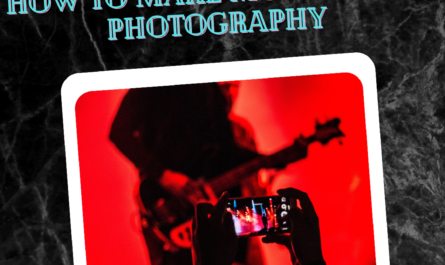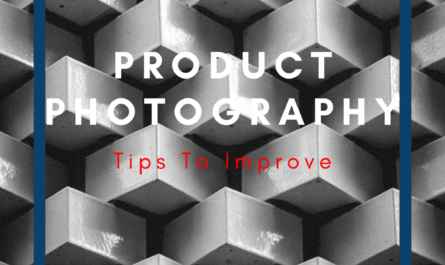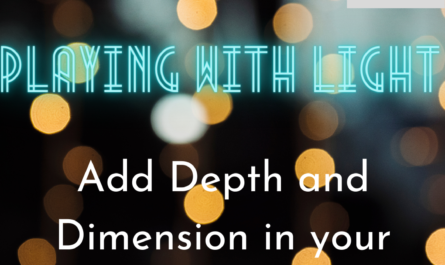Product Photography is one of the most marketable skills in today’s world. With the advent of freelance sites like Fiverr and Upwork, it’s become very easy to market your skills to the hundreds of small businesses that are being created. Product Photography isn’t a very hard skill to learn, and unlike other types of photography, you can work alone most of the time from the comfort of your home (or studio) and distractions like weather that affect many types of photography have no effect on you anymore. Whether you want to learn how to take awesome product photographs for your own business or want to learn a new marketable skill, we have you covered. Here’s a guide on how to take the best product photographs:
What you need:
- A Camera – Any Camera will work, even a smartphone! If using a smartphone, make sure you download a camera app that lets you tweak all the settings manually (you want to be able to adjust settings like the shutter speed and the focus)
- Lighting – You can use pretty much any light source, either natural sources like windows or just random lamps around your house. If you have a professional light source, that will work best, but you can certainly do without it.
- Table – You need something to take your photos on, any table will work. It’s even better if the table is against the wall, which will allow you to get something to either use as your background or prop your background against.
- Your Products – You need to have the objects you want to photograph. Try to notice what colours will complement the products you are taking photos of many clients might not be happy with a basic white background.
- A background – You don’t need to have a background, and you can certainly use a wall, but using coloured pieces of poster board or Styrofoam or just thick pieces of paper (or something like that), can be a cheap and easy option and let you add more colour into your photos. Always remember that you can change the background colour in post after you’re done with the shoot.
- Props – If you want to make your product photography interesting, you will probably have to do some set dressing. Try to find props that compliment your product and ask the client if they want certain colours in the images. You can use pretty much anything you want, try looking for ideas online and use your creativity to decide what you want.
- Editing Software – Don’t ignore how important editing software can be. You can retouch your images, change background colours, remove shadows, and so much more with good editing software. Most professionals use Lightroom and Photoshop, but there are many free options available on the market too.
- Other Extra Things (These aren’t as important, but will improve the quality of your images) –
- Bounce Cards (Board Reflectors) – These are essentially pieces of material that bounce light, they add depth and dimension to your images. You don’t need to buy a professional one though, a piece of white Styrofoam will work just fine.
- Tripod – Tripods are one of those pieces of gear that you can always work around but having one will make certain shots a whole lot easier to get, and you will be able to experiment more with the types of shots you want to take. Tripods will let to take crisper-looking photos because you can shoot at lower apertures and slower shutter speeds. (If using a tripod with a smartphone you will need a mobile grip)

Now you have everything you need to take professional-looking product photos. Let’s get into the stop by step process to shoot these photos now:
#1: Set Design –
Set Design is probably one of the most important things that influence how potential clients/customers for the product you’re shooting, will view that product through the image. Set design choices will vary from photographer to photographer, and person to person. If you’re shooting for a client, you want to ask them if they want specific props or colours in the set, you can also ask them what type of look and feel they are going for. Using different coloured papers, like one on the table, and another as a background can create interesting colour palettes for your images. Set design is really creative and looking at other product photographs and experimenting can help you get a good idea of what you want in your images. However, there are some techniques you can use to make your images look better:
- Using Light and Different Props to Add Depth and Dimension to Your Images – Adding depth and dimension to your images, makes your photos look three-dimensional to the viewer. Add your props and products at different distances from the camera, or maybe place your props and products at different heights. Try to add different light sources, and maybe unevenly light up the shooting surface. Also, try to avoid lighting up the entire background and instead focus on lighting the product. Adding props with different textures and surfaces will help you focus the light to different places in the image too. Try to experiment with your lights, and camera angles as much as possible and find what works best for the product you’re shooting. We have a full article on using light to create depth and dimension in your photos that you can access here.
- Try to Make Interesting Compositions – Learning how to compose your images is one of the most important things for any type of photography, but it especially holds true for product photography. Using different props and surfaces and textures is very important to composing your photos. Adding interesting things that you might not even think of that give an added perspective to your image is a great idea. There are no hard and fast rules for composition in photography. But thinking out of the box and trying things out is probably the only thing I can guarantee will help you out, and make your photos look so much better. Try to change the camera angles to add perspective to your shots too, having a wide variety of angles, and maybe even changing up the composition here and there will make for a solid collection of images. We have a full article on the best techniques to create awesome compositions that you can see right here.
- Try to Add as Much Detail as Possible – There isn’t a lot to say here but capturing the maximum amount of detail you possibly can, of both your props and your products, is very important. That added detail will make your photos look so much more professional and will help your images stand out.

#2: Camera Settings –
Setting up your camera to the most optimal settings to ensure you get a detailed photograph with the desired ‘professional’ look you want to achieve can be very beneficial. Remember, you want to capture the product in the best way possible, and using the proper settings on your camera will help you do that.
- Set your White Balance (WB) to Zero
- Turn your flash off (You already have external lighting; you don’t need the cameras flash)
- Set your image settings to the highest quality. The most optimal setting to capture the highest quality is RAW. Most cameras don’t have RAW though, if that’s the case, set it to the highest file size and the highest quality you can.
- If you’re using a professional camera, you can probably tweak all the. If you’re using a phone, the manual camera app that you have downloaded might allow you to do it too. Set your camera settings to Manual (M). Now change your aperture to the lowest number, or alternatively change the f-stop to the highest number. Now, try to slow the shutter speed of your camera down, try taking some practice photos and see which shutter speeds allow for the best exposure of the image. (Very slow shutter speeds will require a tripod or another shooting surface.)
- Create The Best Frame You Can – Zoom in or zoom out to reach the ideal settings, or if you don’t have the option for optical zoom, move your camera closer to the set.

#3: Set Up the Lighting and Reflectors –
Move your lights around to get the desired look you want. Try to experiment as much as you can with the lights and the reflectors to see what type of look you want.

#4: Take the Picture –
This is pretty self-explanatory. Take a photo and see what you like and dislike. Maybe take a few from different angles, before making any tweaks to the lighting or the set design. Take your time and try a few different designs and lighting arrangements out. If you decide you want to make any major changes in post, write them down.
#5: Edit Your Photos –
Once you’ve decided what photos you like. Start editing them. You don’t have to do the whole works at first. Maybe send them to your client or show them to your boss and decide what they want. Once you know what images you need to edit, take your time in an editing software of your choice and remove any unwanted things. Maybe change the background and make some minor tweaks and adjustments.

Conclusion:
That was a step-by-step guide on how to do Product Photography. Product Photography is a great skill to learn. It doesn’t require as much effort as you think it does, and you can monetize it pretty easily once you get the hang of it. As long as you keep trying and experimenting with the creative process, you will continue to get better and better. Product Photography is also a great way to learn other types of photography, it helps you learn how to manipulate light and learn how to compose your photos better, and helps you increase your creativity. Don’t forget to comment anything you like or think we missed down below, and feel free to ask any questions too!




